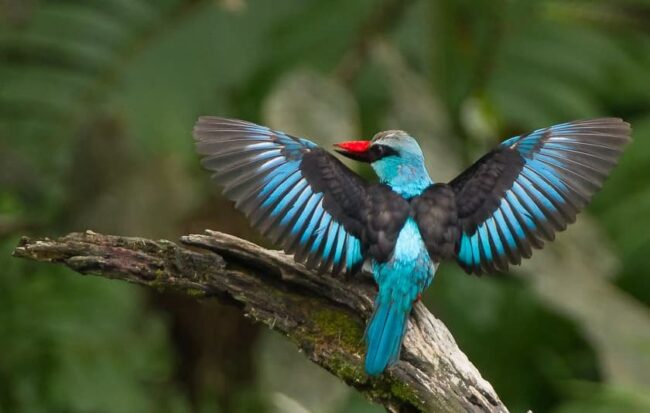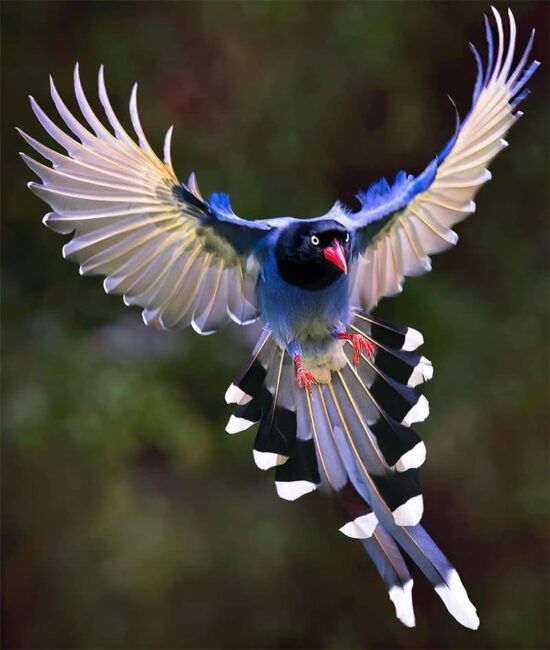The Asian peacock, also known as the Indian peafowl, is one of the most beautiful creatures found on the planet. Its vibrant colors and intricate patterns make it a true spectacle to behold, and it is no wonder that it has been revered in many cultures for centuries. In this blog post, we will take a closer look at the beauty of the Asian peacock and explore some of the reasons why it is such a beloved creature.

The first thing that strikes anyone who sees an Asian peacock is its stunning plumage. The

The train can measure up to six feet in length and is covered in a series of iridescent feathers that shimmer and shine in the sunlight. The colors of the feathers can range from deep blues and greens to rich golds and oranges, and they are arranged in an intricate pattern that is unique to each individual bird.

The peacock’s train serves a practical purpose as well as being a thing of beauty. During mating season, the male peacock will display his train to attract potential mates. He will fan out his feathers and strut around, creating a mesmerizing display of color and movement that is impossible to ignore.

The female peafowl, or peahen, will then choose the male with the most impressive train asher mate. This process is called sexual selection and has been studied extensively by scientists as an example of how beauty can evolve through natural selection.

But the peacock’s beauty is not limited to its train. The bird’s head and neck are covered in feathers that are a deep blue-green color, and its body is a rich shade of brown. The feathers on the head of the male peacock are particularly striking, forming a crest that can be raised or lowered depending on the bird’s mood.

Another feature that adds to the peacock’s beauty is its eyespots. These are circular patterns on the feathers that resemble eyes and are found on both the train and the body of the bird. The eyespots are typically a deep blue or green color, surrounded by a ring of gold or bronze. They are believed to be a form of protection, as they can startle predators and give the peacock time to escape.

In addition to its physical beauty, the Asian peacock is also a cultural icon in many parts of the world. It has been featured in art, literature, and mythology for centuries, and it is considered a symbol of beauty, grace, and wisdom. In Hindu mythology, the peacock is associated with the god of thunder and is believed to be a symbol of protection and prosperity.

In Chinese culture, the bird is associated with beauty, good luck, and happiness.

The Asian peacock is also a popular subject in photography and art. Many artists and photographers have beendrawn to the bird’s vibrant colors and intricate patterns, and have captured its beauty in countless works of art. Whether it is a photograph of a peacock in full display, or a painting of the bird’s feathers, the Asian peacock has inspired countless artists throughout history.

One of the most interesting things about the Asian peacock is its ability to change the color of its feathers. When the bird is not displaying its train, the feathers appear to be a dull brown color. However, when the peacock fans out its feathers, the colors become much more vibrant and eye-catching. This is due to the structure of the feathers, which are made up of tiny microstructures that reflect light in different ways. By shifting the angle of its feathers, the peacock can create a stunning display of colors that is truly breathtaking.

In conclusion, the Asian peacock is a stunning creature that is beloved by people all over the world. Its vibrant colors, intricate patterns, and graceful movements make it one of the most beautiful birds in existence. Whether it is strutting around to attract a mate or simply resting in the sun, the Asian peacock is a true spectacle to behold. As a cultural icon and a symbol of beauty, grace, and wisdom, this magnificent bird will continue to captivate and inspire people for generations to come.

